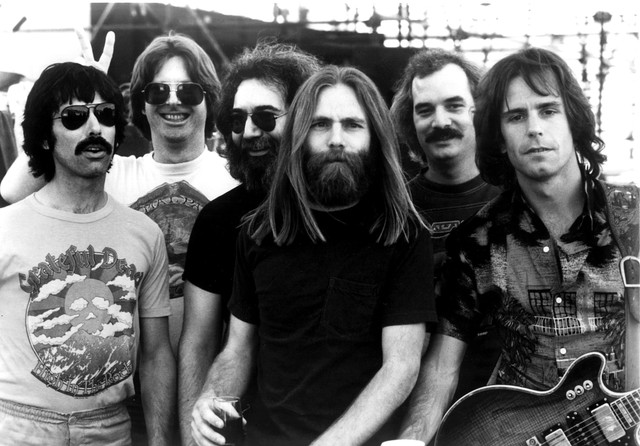
The Grateful Dead: A Journey into Musical Exploration and Countercultural Legacy
Originating in the vibrant San Francisco music scene of the 1960s, the Grateful Dead remains one of the most iconic and influential bands in the history of music. Combining elements of rock, folk, blues, and psychedelia, the band carved a unique path, captivating audiences with their improvisational prowess and enigmatic sound. In this blog, we dive into the origins, legacy, and key features that define the Grateful Dead.
Origins and Evolution:
The Grateful Dead was formed in 1965 in Palo Alto, California, at the forefront of the counterculture movement that challenged societal norms and embraced free expression. The band’s lineup included Jerry Garcia (guitar, vocals), Bob Weir (guitar, vocals), Phil Lesh (bass), Ron “Pigpen” McKernan (keyboards, vocals), and Bill Kreutzmann (drums). They would later be joined by Mickey Hart (drums) to solidify their classic lineup.
The band’s name, “Grateful Dead,” is steeped in history and folklore, drawing inspiration from an old English folk ballad. It was chosen spontaneously, reflecting the band’s affinity for the unconventional and mysterious.
Musical Identity:
At the heart of the Grateful Dead’s allure was their distinctive approach to music. Their concerts were legendary for their lengthy improvisational segments, allowing the band members to explore uncharted musical territories. This approach, often referred to as “jamming,” led to every performance being a unique experience, with the band feeding off the energy of the audience and each other.
Their music was an amalgamation of genres, from the folk-inspired “Friend of the Devil” to the bluesy “Turn On Your Love Light” and the spacey “Dark Star.” This eclectic mix, combined with intricate instrumentals and Garcia’s soulful voice, solidified their reputation as genre-benders.
Legacy and Impact:
The Grateful Dead’s legacy extends far beyond their music. Their concerts were gatherings of like-minded individuals who formed a community known as “Deadheads.” These devoted fans embraced the band’s philosophy of unity, love, and spontaneity. The iconic imagery associated with the Grateful Dead, including the “Steal Your Face” logo and dancing bears, became symbols of a culture that celebrated individuality and free expression.
In 1969, the band’s performance at Woodstock introduced their music to a wider audience, marking a pivotal moment in their career. Their influence on subsequent generations of musicians, particularly in the realm of jam bands, is immeasurable. Bands like Phish, Widespread Panic, and The String Cheese Incident were inspired by the Grateful Dead’s improvisational spirit.
A Timeless Journey
The Grateful Dead’s music continues to transcend generations, attracting new listeners while comforting longtime fans with its familiarity. Their origins in the counterculture movement of the 1960s, along with their musical experimentation and commitment to communal experiences, have left an indelible mark on music history. The Grateful Dead, with their iconic sound and philosophy, remind us that music can be a journey of self-discovery, unity, and boundless exploration.
Whether you’re a devoted Deadhead or a newcomer curious about the magic of their music, the Grateful Dead’s legacy remains an eternal flame in the pantheon of rock and roll.
So, put on your tie-dye shirt, embrace the improvisational spirit, and let the music of the Grateful Dead transport you to a world where boundaries are meant to be crossed, and the journey is the destination.

